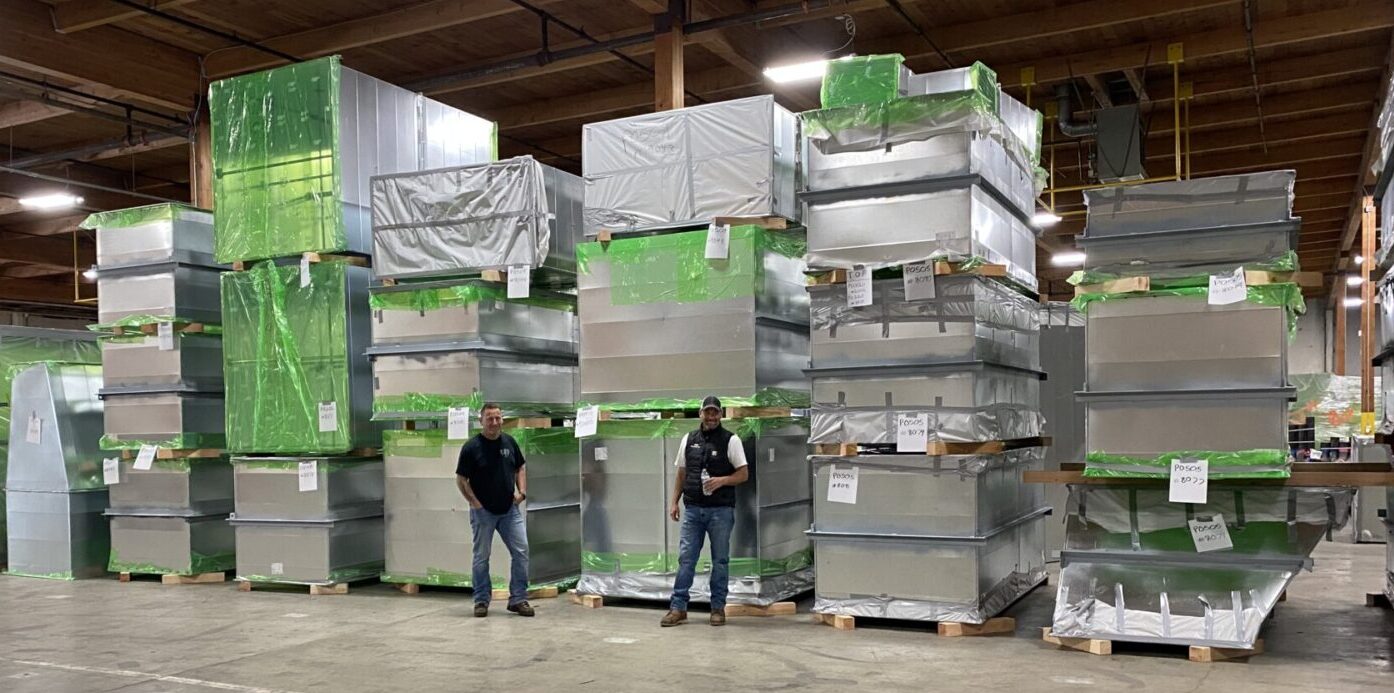Summit LEED Platinum
Sustainability Certification
The Seattle Convention Center Summit Building received LEED Platinum certification from the U.S. Green Building Council (USGBC). The Summit is among a few North American convention centers to reach this highest level of achievement. To achieve a LEED Platinum certification, a building must earn at least 80 points in the LEED (Leadership in Energy and Environmental Design) rating system. Points can be earned through the building’s sustainable features and energy performance.
MacDonald-Miller’s scope for the Summit included providing and installing all the HVAC systems, including mechanical piping, sheet metal, and controls. While our work as a mechanical partner is mostly visible (large ducts and pipes), our sustainability contributions are oftentimes behind the scenes! Here are a few of the ways the MacDonald-Miller team showed up as a sustainability partner on the Summit project.
Material Selection
The LEED Indoor Environmental Quality (IEQ) Credit Low-Emitting Materials has limits for Volatile Organic Compounds (VOCs) in wet-applied products; therefore, we selected adhesives and sealants with lower VOCs. This improves indoor air quality for installers and future occupants.
In addition, we wrapped all ductwork fabricated in our shop in green duct film. This practice reduces particulate accumulation in ducts during transport, storage, and installation. The Summit achieved a 92% construction material diversion rate – meaning only 8% of the material went to the landfill and the rest was recycled.

Indoor Air Quality
The LEED IEQ Section requires proper ventilation and filtration levels to ensure a healthy, comfortable indoor space. For the Construction Indoor Air Quality Management Plan credit, the building had to successfully flush 14,000 cubic feet per square foot of outside air and maintain an indoor temperature of at least 60°F. This is not a small task for a 1.5 million-square-foot building like the Summit!
The MacDonald-Miller Controls team (who engineered and installed the Building Automation System for the entire Summit expansion) facilitated this flush, which moved 17 billion cubic feet of air.
Fun fact: The 17 billion cubic feet of air required for the building flush traveled through 1.5 million pounds of ductwork fabricated by MacDonald-Miller’s shop! (Some of the ductwork is more than 20 feet wide.)

Radiant Heating & Cooling
Part of this project’s LEED energy reduction strategy uses radiant floors in the lobby, hill climb, and pre-function areas to supplement airside conditioning. Radiant pipes in the floor provide cool circulated water to absorb the sun-generated heat during warmer months and, conversely, circulate warm water to generate heat in the cooler months. Energy reduction is achieved by conditioning the area needed (where people walk) versus heating the expanse of space between guests and ceilings. Radiant floors are more efficient at transferring thermal energy than traditional forced-air systems alone. Not only will this provide a more comfortable experience, but it will also provide lower energy costs.
Shout out to the MacDonald-Miller team (U.A. Local 32) who installed over 100 miles of PEX tubing over a year and a half on this project!

Sustainable Results
MacDonald-Miller’s value of sustainability stems from our company’s mission to make buildings work better. All projects can enhance human health and the natural environment through material use, innovative technologies, and construction practices. Whether a project is in design, under construction, or an existing building ready for improvement, we have innovative solutions to assist every customer with sustainable efforts.
Learn more about our sustainability commitment here: macmiller.com/sustainability
